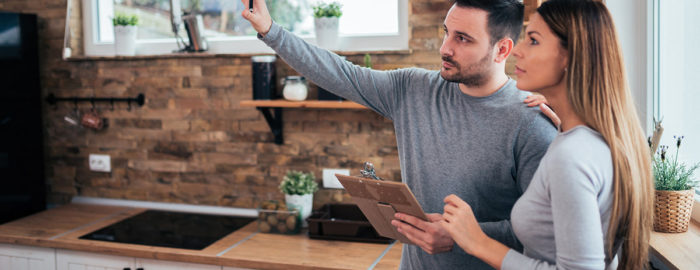Owners can finance improvements on their home by using home improvement loans as a funding source. Home improvement loans do not rely on the home as collateral and are instead personal installment loans. Due to the higher risk to the lender with these types of loans, the interest rate is often much higher than a normal mortgage loan.
Rates on home improvement loans in today’s market could vary between 6 percent and 36 percent. Your credit score will determine the interest rate, the lower your score, the higher the loan rate and the higher your score, the lower your loan rate.
Based on the extent of the improvements you want to make smaller loan amounts are under $40,000 while larger loan amounts are over $40,000. In some cases, a larger loan may have a lower interest rate.
In addition to the interest rate being higher than a regular mortgage, the term is also shorter. Like a car loan, the term can be between five and seven years. If you make a $50,000 home improvement loan and you have good but not great credit, the loan could have a 12 percent interest rate for seven years. Making your monthly payment $882.64.
An alternative way to fund home improvements is to do a cash-out refinance. This type of loan uses your home as collateral. The lender would pay off the current mortgage and then give you a new mortgage with the balance left plus the amount of the home improvements. In this case, lenders will usually require you to maintain a minimum of 20 percent equity in your home.
For example, assume a homeowner owed $230,000 on an existing mortgage and needed $50,000 for improvements. The new loan amount would be increased to $280,000 with the home needing to appraise for at least $350,000 for the homeowner to keep the 20 percent equity margin.
This is where you need to be careful if you do a cash-out refinance with a typical 30-year term you are financing the home plus the improvements for another 30 years. The advantage would be in a smaller monthly payment.
So, if we use another example where you originally borrowed $250,000 at 4.5 percent for 30 years with a monthly payment of $1,266.71. After you make 54 payments, the unpaid balance is $230,335. If you do a cash-out refinance at 4.5 percent for another 30 years to get the $50,000 and you financed the closing costs of $8,700, the new monthly payment will be $1,464.50.
However, using a home improvement loan, your combined payments would be $2,149.35, a higher amount by $684.85. Home improvement loans do have lower closing costs than regular mortgage loans. But a cash-out refinance also adds $8,700 to the owed amount, produces a lower payment and stretches it out over a longer period.
Your other alternative loan is called a HELOC or Home Equity Line of Credit which can be explored and compared to the two options mentioned above. If you are going to finance improvements, a comparison of the different types of loans and payments can be helpful in the decision-making process.
A trusted mortgage professional is a valuable resource to assist you with current and accurate information. If you need a recommendation, please call me at (703) 303-4010.
Want Some Insider Information on Fairfax VA homes for sale? Get a FREE Market Snapshot Report of Your Northern Virginia Home’s Value, or Search All Northern Virginia Homes For Sale. Put that data you need at the tips of your fingers!


